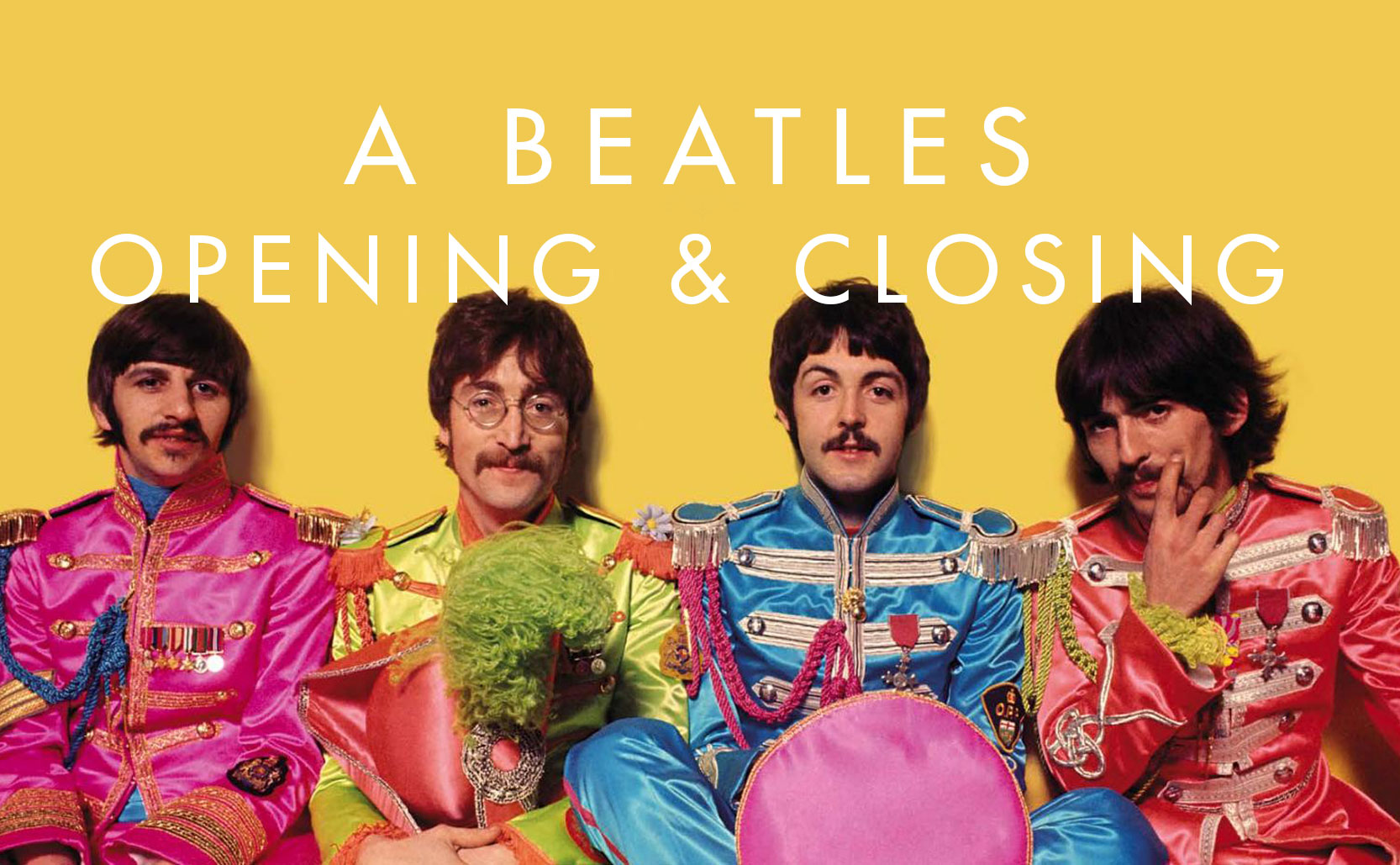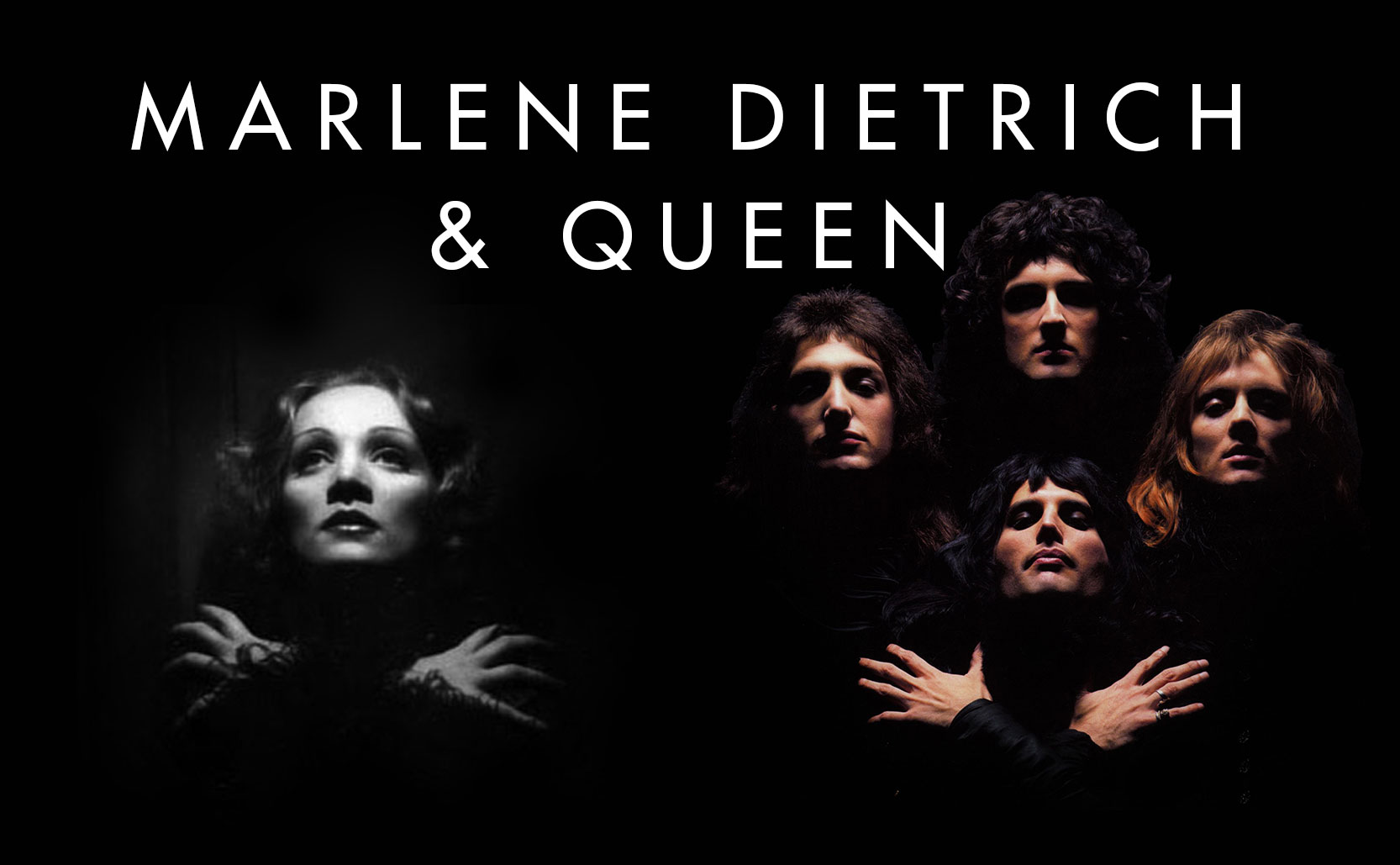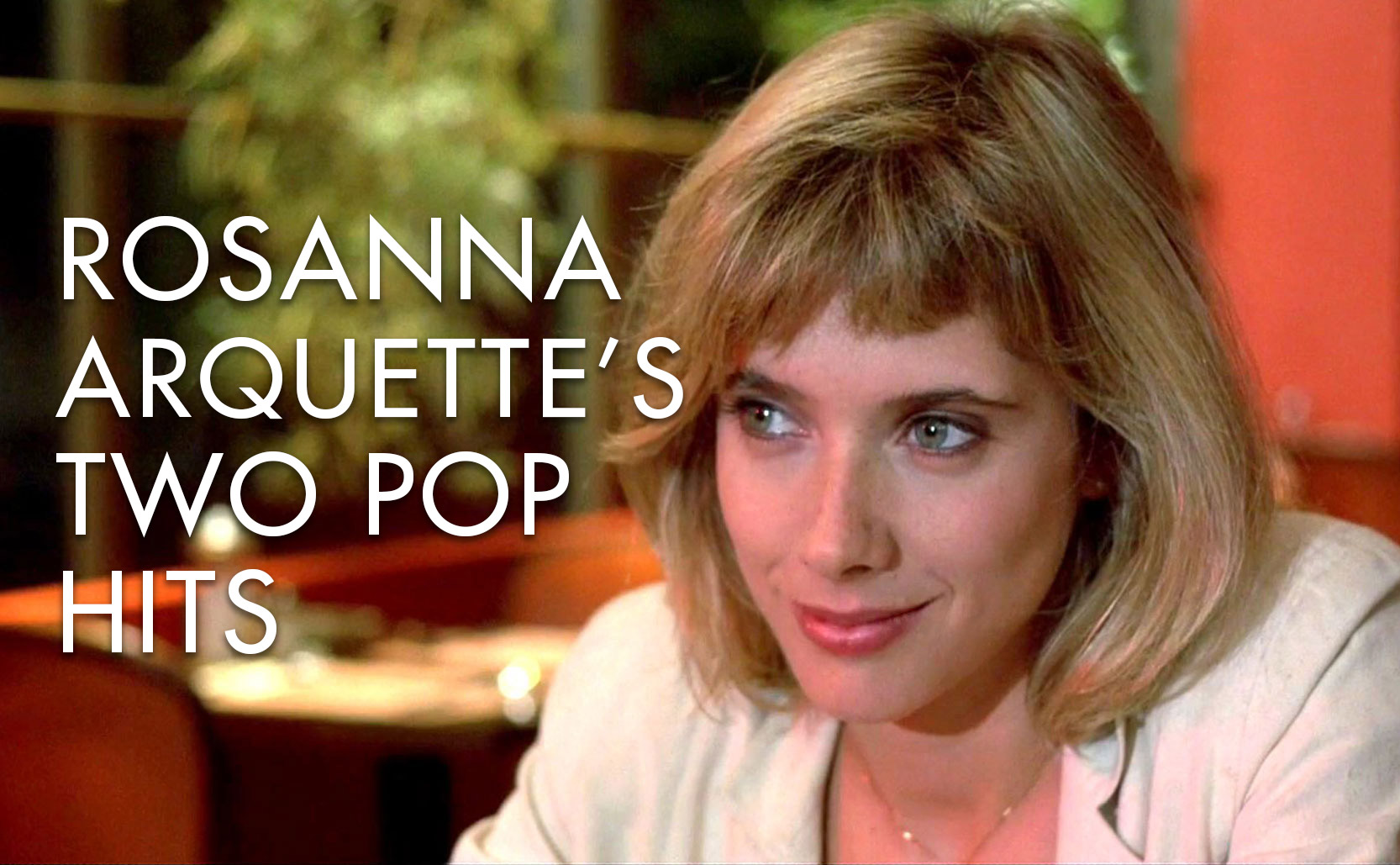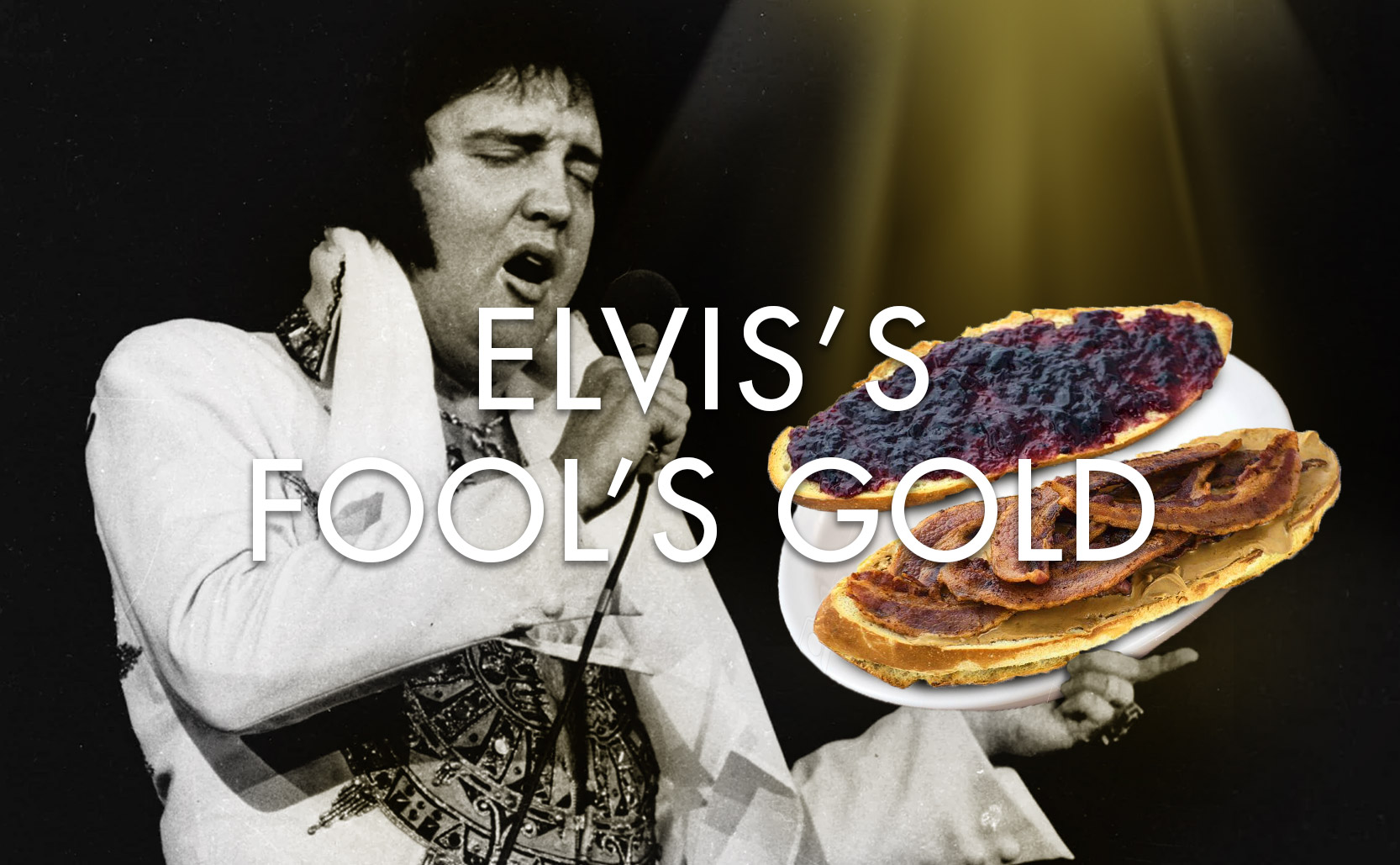Lyrical Dissonance
When the melody doesn’t match the lyrics.
In most songs the melody aligns with content of the lyrics. Sad melodies have sad lyrics, upbeat melodies have happy positive lyrics. Lyrical Dissonance is when there’s a mismatch. Most typically lyrical dissonance is found in songs that have happy melodies but, upon closer inspection, have subversively dark lyrics. This juxtaposition of incongruent melody to lyrics is found across genres.
One of the most famous examples is 1940’s You Are My Sunshine first made famous by Jimmie Davis (but recorded by many musicians over the years). The melody is so bright & cheerful it’s understandable why it’s one of the official state songs of Louisiana. The lyrics however, are about a man who is heartbreakingly alone having been abandoned by his former love and that happiness (his sunshine) has left his life.
LDN by Lily Allen is a very clever example in that it explores dissonance on multiple levels. The song is about how reality is not quite what it seems, the dissonance between perceived reality vs. actual reality, and that behind a happy surface-level exterior there is frequently a darker truth.
Then there is the second level with the lyrical dissonance between the happy upbeat melody and the dark lyrics. Finally, to add yet another level, the music video for this song visualizes this dissonance with Allen moving through a saturated colorful happy London, but when she moves away from a scene the grimy darker reality is exposed. The two versions of each scene conflicting with one another.
There are many happy sounding songs with lyrics about lost loves or failed romances
• Copacabana by Barry Manilow – is about a showgirl whose bartender love is killed, their Copcacabana nightclub eventually becomes a discotheque, and she lives out her life alone, disheveled, and depressed drinking herself blind thinking of the past.
• Mamma Mia by ABBA – is about a failed relationship full of regret, wishing they could have the person back.
• Act Naturally by Buck Owens – the singer is going to be successful in the motion picture industry with roles of sad depressed characters just by acting naturally given his experience at being depressed & lonely.
• Walking The Floor Over You by Ernest Tubb – the singer has been left by his love and now, depressed and alone, he paces around the room not knowing what to do with himself.
• Once A Day by Connie Smith – the singer has been left by her love but only feels depressed once a day. Unfortunately that “once” is the entirety of the day, every day.
• Lovefool by The Cardigans – the singer is desperate to be loved by someone who isn’t interested.
• Go Your Own Way by Fleetwood Mac – like many Fleetwood Mac songs, Go Your Own Way is about a failed relationship within the band. The song is about a man (Lyndsey Buckingham) doing everything for his love (Stevie Nicks) but realizing he has to end the relationship because he’s being used.
• Build Me Up Buttercup by The Foundations – the singer is being strung along by a person who doesn’t really care about him, but despite this abuse he still wants a real relationship with this person.
• Pretty in Pink by the Psychedelic Furs – is about a girl who has sex with various guys thinking it will make her popular, but in reality she’s treated like a joke and mocked behind her back. The John Hughes movie was named after the song, but the plot of the movie is nothing like the lyrics of the song.
• Macarena by Los Del Rio – the original lyrics for the dance craze pop hit Macarena are about a woman who, while her boyfriend is away serving in the military, cheats on him over and over again.
Lyrical dissonance can also hide depression with upbeat music
• Dancing In the Dark by Bruce Springsteen – Springsteen was pushed to write another hit single for his 1984 album Born in the U.S.A.. Angry and pressured, he wrote Dancing In the Dark in one night. The singer is isolated, depressed, tired, and dissatisfied with his life, needing help to find a way out (and in Springsteen’s case, needing a way to escape the alienating pressure to produce hit songs). The “dancing in the dark” in this case is his moving in darkness trying to find meaning / light for his life.
• Piano Man by Billy Joel – is about a piano player at a local bar observing the various regulars at the bar, each of whom have unfulfilled dreams with little chance of every finding success.
• Chandelier by Sia – is about a protagonist whose excessive party lifestyle is masking pain and unresolved problems.
• Another Day, Another Dollar by Wynn Stewart – is about working your life away, day after day.
• Today by the Smashing Pumpkins – Today is the greatest day, because the suicidal protagonist (who has already cut himself in self-harm, “pink ribbon scars”) has decided that his life can not get any worse. The title is ironic, that from this point on things can only be better than absolute rock bottom.
Fun songs about heroin
• Lust For Life by Iggy Pop – is named for the 1956 bio film about Vincent van Gough, Lust for Life. That aside, it’s a song about recovering from heroin addiction, it references the work of William S. Burroughs, and generally speaks of depravity. It’s not the fun joie de vivre anthem people think it is, and Royal Caribbean certainly shouldn’t have used it to sell cruises.
• There She Goes by The La’s – is about the love of heroin, or possibly about a woman.
• I’m Waiting For The Man by the Velvet Underground – is about going up to Harlem to buy some heroin. The “man” in question is the protagonist’s drug dealer.
Going from nature, to industrial society, and back again
• Big Yellow Taxi by Joni Mitchell – is about environmentalism, regret, and the destruction of nature.
• [Nothing But] Flowers by the Talking Heads – is like a reverse Big Yellow Taxi. It’s about a post-apocalyptic world where nature has reclaimed urban areas and the singer is torn between appreciating the new natural world and longing for the comforts of his former industrialized lifestyle.
Violence masked by fun melodies
• Shiny Happy People by R.E.M. – is a sardonic satirical song about the smiling happy people seen in Chinese propaganda in the wake of the Tiananmen Square massacre. (Bonus: the Sesame Street parody Happy Furry Monsters really is about happy furry monsters.)
• Electric Avenue by Eddy Grant – is about the 1981 Brixton Riot in London where hundreds of people were injured clashing with the police.
• Mack the Knife – has a long and complicated history, but the version popularized by Bobby Darin is about a knife-wielding murderous gangster.
• Jack Straw by the Grateful Dead – inspired by Of Mice and Men, Jack Straw is a murder ballad about a group of outlaws who are on the run from the law. As there is no honor among thieves members start killing each other off. (Bonus: this video includes the legendary naked Oregon pole guy.)
• Maxwell’s Silver Hammer by the Beatles – is about a hammer wielding murderer.
• Brown Sugar by the Rolling Stones – is an incredibly dark song about West African slaves being brought to the United States and the female slaves being raped at night by their owner.
• Pumped up Kicks by Foster The People – is about a kid named Robert dreaming of shooting his classmates at school.
• I Don’t Like Mondays by the Boomtown Rats – is about an actual school shooting in San Diego in 1979. The shooter, Brenda Spencer was asked why she killed people on the playground and she said “I don’t like Mondays. This livens up the day.”
And of course, happy songs protesting war
• Fortunate Son by Creedence Clearwater Revival – used in montage scenes for Vietnam war movies, in ad campaigns to help sell blue jeans, and even without permission by the ultimate fortunate son Donald Trump (Trump, his staff, and his MAGA followers being too dumb to see the irony of its use) Fortunate Son is arguably the most famous anti-war anthem. Behind the up-tempo rock melody is a social criticism of how the unaffected elite social class wage wars that poor kids have to go fight & die in.
• 99 Red Balloons by Nena – is about the futility of war and how something as innocent as releasing balloons near the Berlin Wall could cause military escalation and eventual mutual destruction on both sides.
• Born in the U.S.A. by Bruce Springsteen – like Dancing In the Dark, this song is also on the Born in the U.S.A. album. It’s a protest song. It’s about a disillusioned working-class veteran who society has rejected & alienated. It is not the pro-America Reagan-era anthem most people think it is, but rather it’s a scathing criticism of 1980s America.
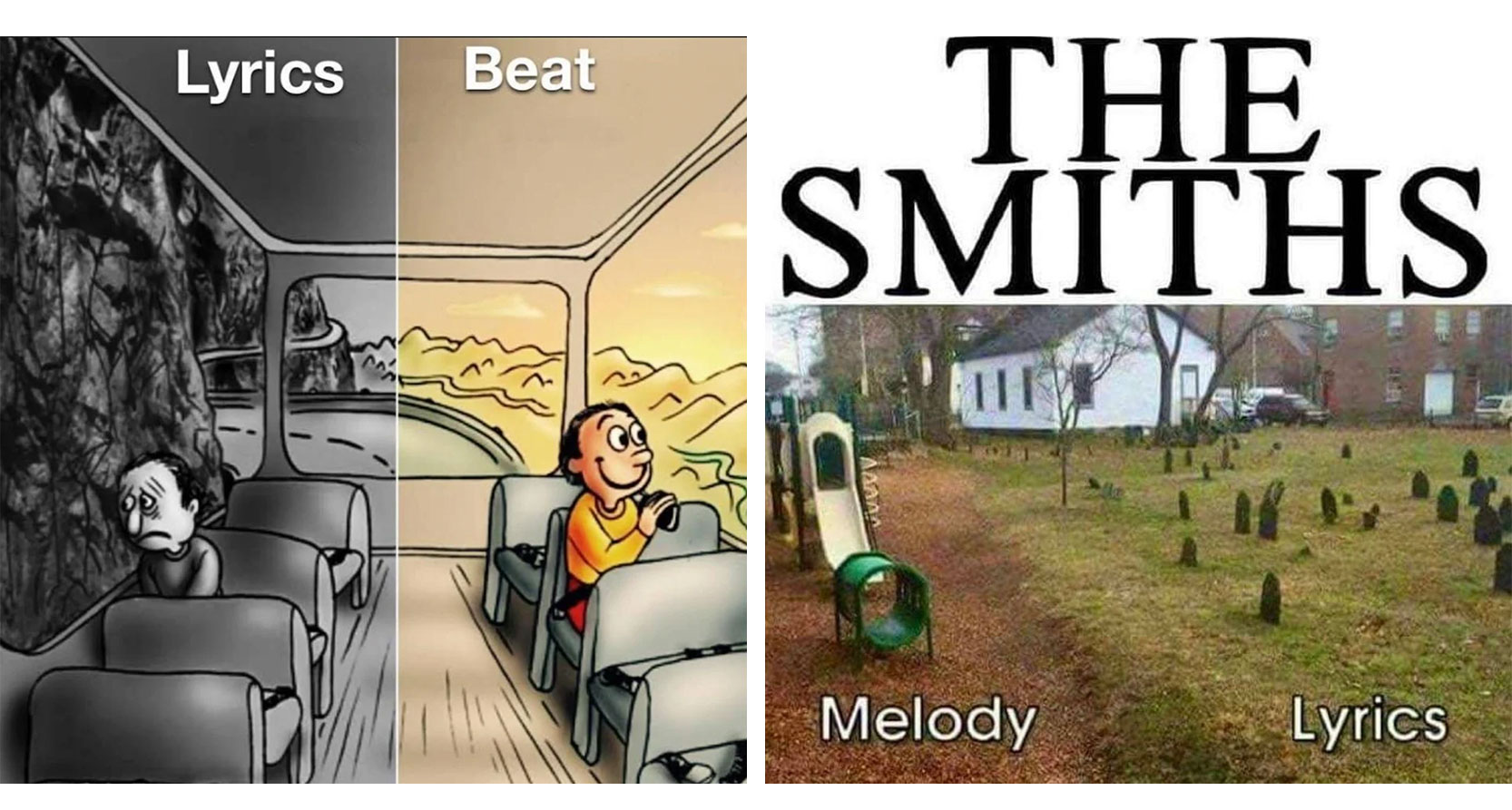
Dark Melodies, Positive Messages
Not as common, but lyrical dissonance is also found the other way around with dark melodies & positive lyrics. Black Sabbath’s 1970 song War Pigs is very dark melodically, but the lyrics are strongly anti-war. War Pigs is like a darker sounding Fortunate Son. It’s a criticism of the Vietnam War (and war in general) and how the rich & powerful benefit from war while facing none of the dangers, sending the poor off to die.
(Warning: if you’re squeamish, this isn’t for you)
Added info: Musical dissonance/incongruity can also be found in a slightly different way in TV & film. This is where the mood of the song being played does not align to what is taking place in the scene. Frequently this is done with a happy song being played as a counterpoint to a dark disturbing scene.
This has become a common trope in entertainment today but a few early examples helped define the concept.
• David Lynch employed this concept in Blue Velvet with Roy Orbison’s In Dreams.
• The X-Files used Johnny Mathis’s Wonderful! Wonderful! multiple times in perhaps the show’s most infamous episode Home.
• However, no director is more famous for this than Quentin Tarantino. One of Tarantino’s earliest and best known uses of this technique is in 1992’s Reservoir Dogs and its well-known use of the Stealers Wheel song Stuck in the Middle with You.



